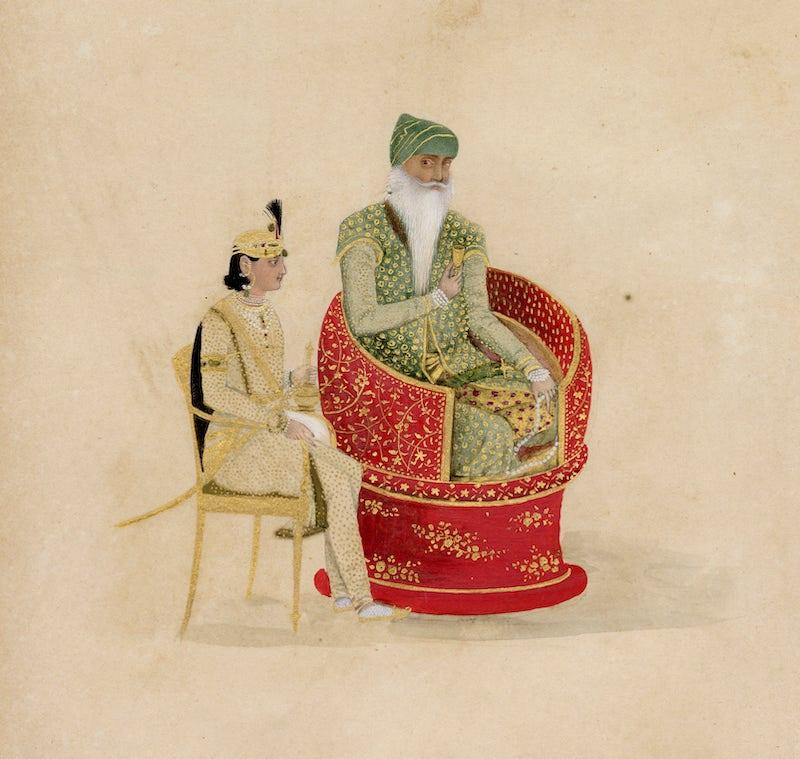Ranjit Singh: Sikh, Warrior, King
Ranjit Singh: Sikh, Warrior, King
The Wallace Collection
10 April–20 October 2024
Normally, safely in neighbouring glass cases in the Victoria and Albert Museum, rest two most important objects, spoils of empire, that mark Britain’s fraught encounter with India at the turn of the nineteenth century: the mechanical tiger devouring an officer of the East India Company made for Tipu Sultan and golden throne of Maharaja Ranjit Singh. Tipu, 1751-1799, and Ranjit, 1780-1839, a Muslim and a Sikh, were dynamic rulers who created great realms which challenged the East India company, drawing on the strength and ingenuity of their subjects, irrespective of religion, through their tolerant rule. Ultimately the British possessed both Tipu’s Mysore and Ranjit’s Sikh Empire centred in North East India and what is now Pakistan, but only after the latter’s death.
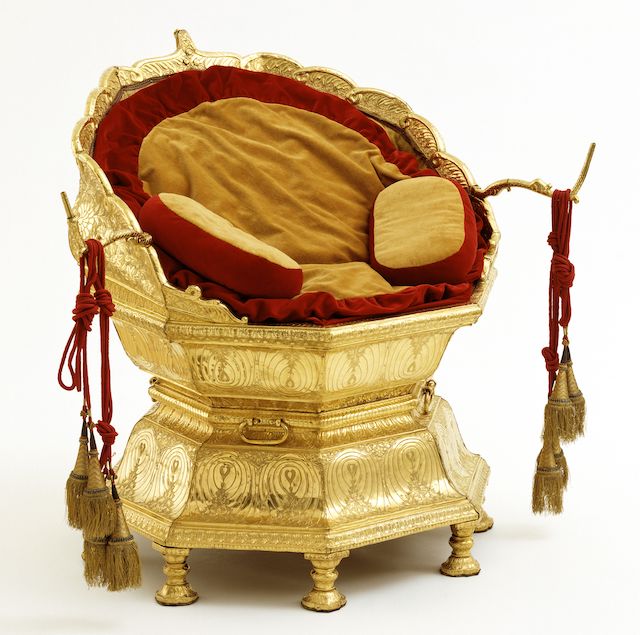
The splendid lotus-shaped throne, covered with thick sheets of beaten gold, has been partially liberated. It forms the centrepiece of the enriching exhibition devoted to Ranjit Singh at the Wallace Collection. The museum holds important examples of arms and armour associated with Ranjit Singh, including what is probably his sword. Crucial to the show are loans from a major private collection of Sikh historical material (The Toor Collection), in particular miniatures around which the narrative is constructed. Added to this are further major loans of arms from the Royal Armouries and an extraordinary emerald-encrusted girdle from the Royal Collection.
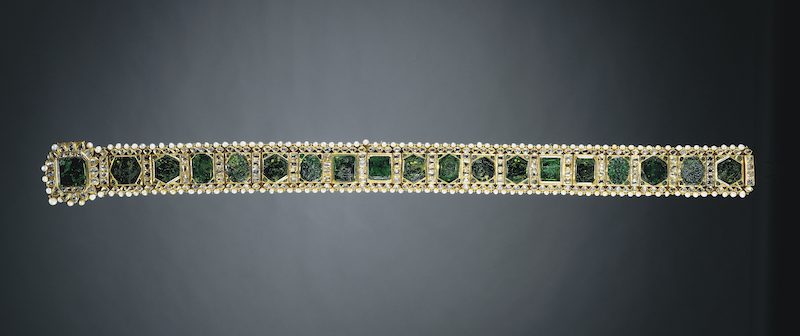
© Royal Collection Trust / © His Majesty King Charles III 2024
Ranjit’s life was a long one. When he was very young he began creating his empire by binding together various Sikh mini-states and adding further conquests; but the focus of the exhibition is largely upon objects made around 1830 as ornaments of his splendid court at Lahore. Arms and armour are key as Ranjit built his power drawing on the Sikh martial tradition going back to Guru Gobind Singh. However, Sikhs made up less than 10% of the population, so that Ranjit’s army and administration was substantially made up of Muslims and Hindus; and his court culture reflected this. Ranjit’s court culture, like the other successor states of North India, is moulded by Mughal taste; this underlay the extraordinarily high quality of the metal work, whether jewellery or armour, which here is given specific Sikh elements. It’s important to remember that it was not merely material objects but that Ranjit Singh was also a major patron of dance, music and literature in the tradition of Indian rulers (indeed the lineage of the Patiala gharana has roots in his court in Lahore); although it is to be regretted that this is not represented in the exhibition.
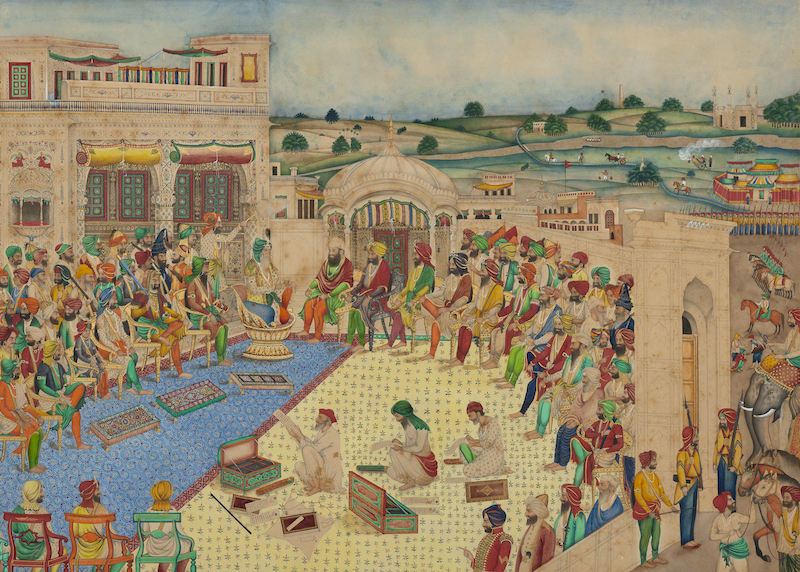
1863-1864 © Toor Collection
History is often both intriguing and troubling. Ranjit created his realm at the edge of Britain’s growing power in the subcontinent warily and astutely. However the engagement with European culture is quite apparent. In the impressive miniature painting of his court, Ranjit sits with his legs tucked up on an Indian throne (possibly ivory) but his sons and ministers sit on European style neoclassical armchairs. His sword has a state of the art Wilkinson blade and an Indian hilt. Ranjit was between two worlds, and one cannot but be shocked by the miniature of Ranjit on his pyre with some of his wives and their maids, performing sati, about to be consumed by the flames. This was at a time when progressive Indian thinking had turned firmly against this practice; and it had indeed been prohibited by the Sikh religion.
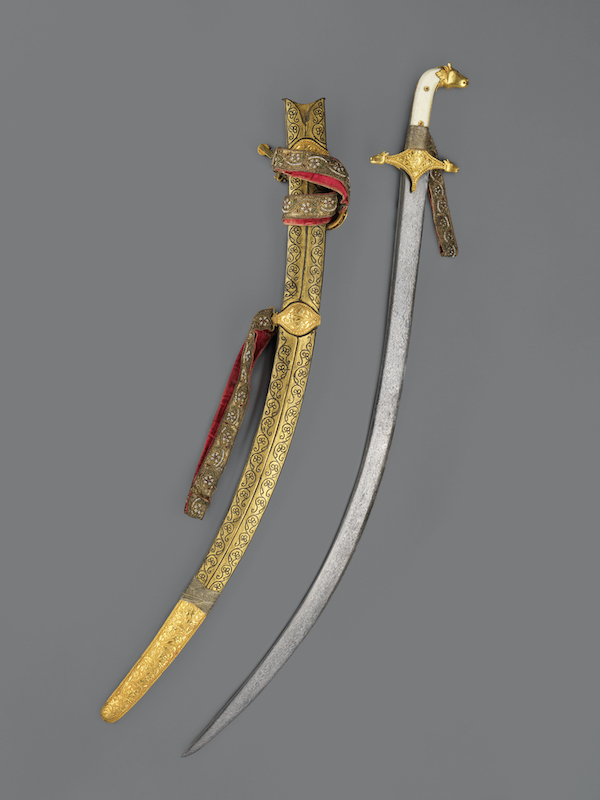
© The Trustees of the Wallace Collection
The 1830s are less than two hundred years ago. The arms and armour are marked by exquisite craftsmanship which drew the mid nineteenth-century collector Richard Wallace, and he displayed this material alongside his great collection of mediaeval and renaissance armour. These essentially contemporary objects were being held as equal to a collection which was antiquarian and about the past. This, more than equal esteem for extraordinary craftsmanship, has an interesting aspect of Orientalist and Imperialist taste that places the exotic present alongside the historic European past. Consistent with this was Wallace’s collecting of paintings of North Africa by contemporary French artists in the galleries upstairs; or the Ashante gold brought to London after a punitive British expedition in 1874, alongside which the arms associated with Ranjit are normally displayed.
The Wallace Collection remains one of the most rewarding of London’s museums; and initiatives like this expand its outreach in interesting ways; many of those of all ages who come to see the great Sikh Warrior King are then going on to explore the riches of the permanent collection.

